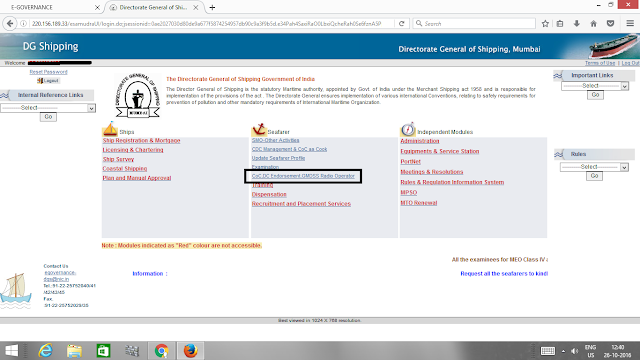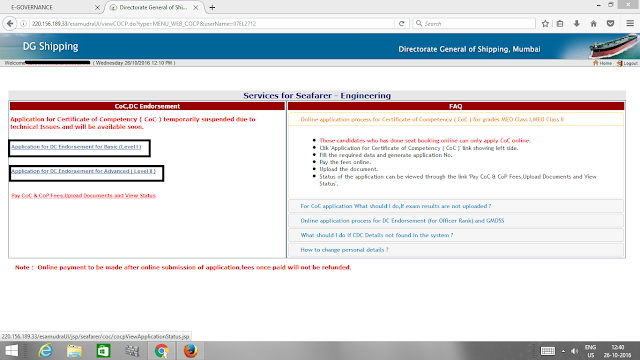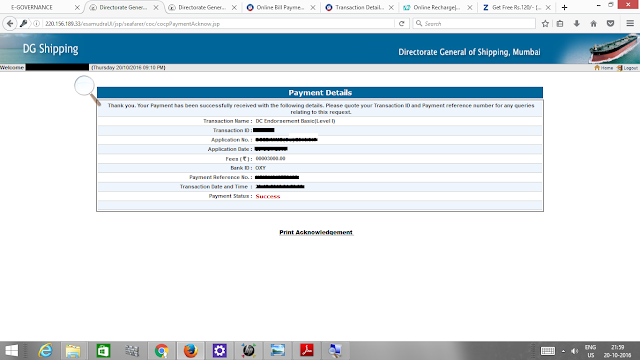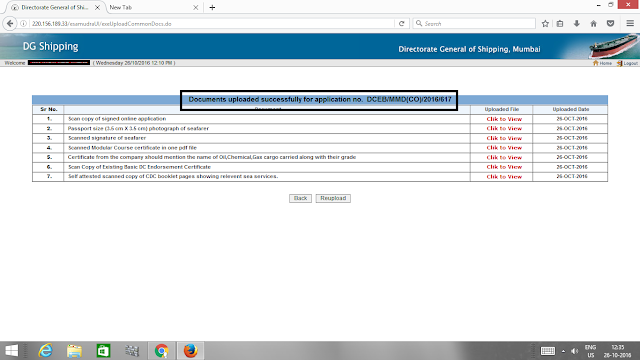The DG shipping has started online application facility to MEO Class — IV candidate through the ePariksha module. The Directorate has made it mandatory for successful candidates of MEO Class-IV to follow the above online procedure for applying for MEO Class-IV CoC with effect from 30 / 10 / 2017. Physical submission of CoC application at MMD for MEO Class - IV shall not be entertained from 30 / 10 / 2017.. The Directorate therefore prescribes the following procedure for on-line submission of CoC application, review, approval and issuance of CoC to candidates who have successfully passed their MEO Class-IV grade of engineering examination.
➢Login to account using ePariksha Login credentials
➢ Click on Certification tab and then select Fee Detail
➢ Click on pay button which will redirect to bill desk
➢Pay the fee for COC application.
➢After the payment, click on the COC Application Form
➢ Click on page 2 at the bottom of the application form.
➢Click on the submit button at the bottom of the page 2 to apply for COC.
➢Click on the Print Option to print the COC application form in case you wish to keep a hard copy of CoC application.
➢The CoC shall be dispatched by speed post and the applicant will receive a confirmatory mail including speed post tracking details.
➢In case a query is raised and application is kept on hold, answer the query satisfactorily and resubmit. The query should be answered in two working days failing which the submitted application shall be deemed to be rejected and the candidate has to apply afresh.Candidate desiring to have his EXN-45 booklet may collect the samefrom MMD as per his convenience.
Pass on this message to all your friends. You can share using the below faceboook tab. Also subscribe us on youtube to get all new updates.



























